 Larus cachinnans
Larus cachinnans
(last update:
Greg Neubauer
Marcin Przymencki
Albert de Jong
Mars Muusse
cachinnans plumages
Larus cachinnans hybrid 3CY, 5CY & 8CY male 4P46 November 2006 - October 2011, Detmold, Germany & May 2008, Włocławek Reservoir, central Poland.
Backcross hybrid Caspian x Herring Gull. Mother known as hybrid Caspian x Herring, father as a pure Caspian. Ringed as a chick on May 09 2004 in Wloclawek. Phenotypics discussed below (bottom page) using table 1 from Gibbins et al. Total score for this bird is 8 (but open for discussions), still placing it in the "pure Caspian part" of the spectrum; hybrids start at score 9. Thus, despite our knowledge this is a hybrid, it will probably go into the books as 'odd cachinnans' with much streaking and pale eye.
below: cachinnans hybrid 3CY male 4P46 November 03 2006, Deponie Pohlsche Heide - Minden, Germany (52°23'05N, 08°46'45E). Picture: Armin Deutsch.
Currently, we have too little information to develop identification criteria for hybrids of this age class. This bird has more uniform grey on its upperparts than on a typical Herring of this age, a longish bill but moderate (too heavy for Caspian) streaking on the head. The iris is much paler than typical in Caspian of this age.
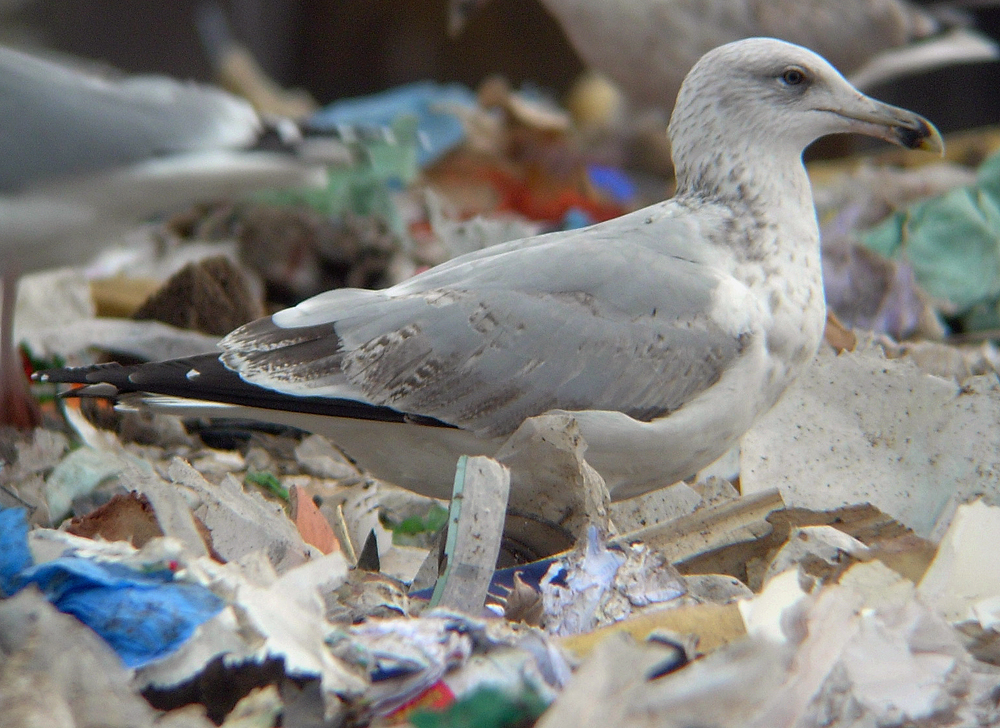
below: cachinnans hybrid 5CY male 4P46 May 21 2008, Włocławek Reservoir, central Poland. Picture: Grzegorz Neubauer.
Given its age, this bird shows rather a surprisingly brownish alula and primary coverts. With a score of 10, it falls closer to Caspian than Herring, as expected given that Caspian genes predominate. Its hybrid origin is unlikely to be detected in the field, and most likely this bird would be identified as Caspian if unringed. In the bottom photo it is paired with a female Herring.

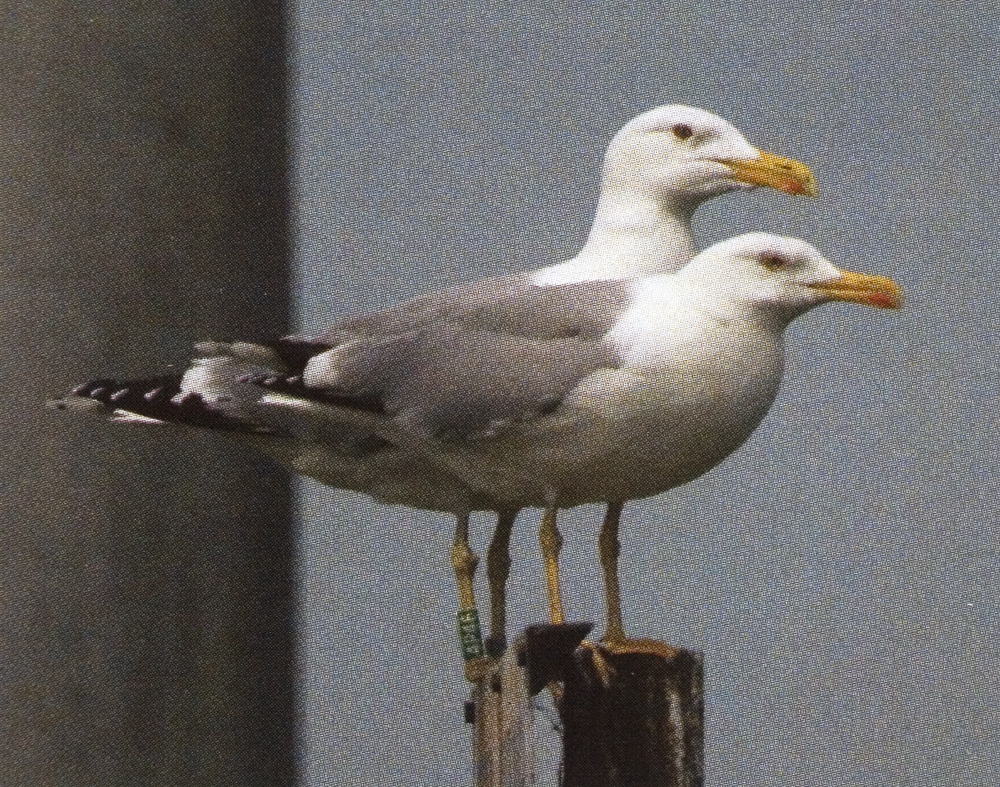
below: cachinnans hybrid 8CY male 4P46 October 13 2011, Pohlsche Heide - Detmold, Germany. Picture: Armin Deutsch.
This interesting plate shows 4P46 as an adult (7CY), nearly in full winter plumage (primaries still regrowing).The head-streaking, especially the shadowing around the eye, is too heavy for any normal Caspian Gull, and perhaps would be the first clue to it being a probable hybrid. Note than in this photograph the bill is slightly open and so looks deceptively deep.
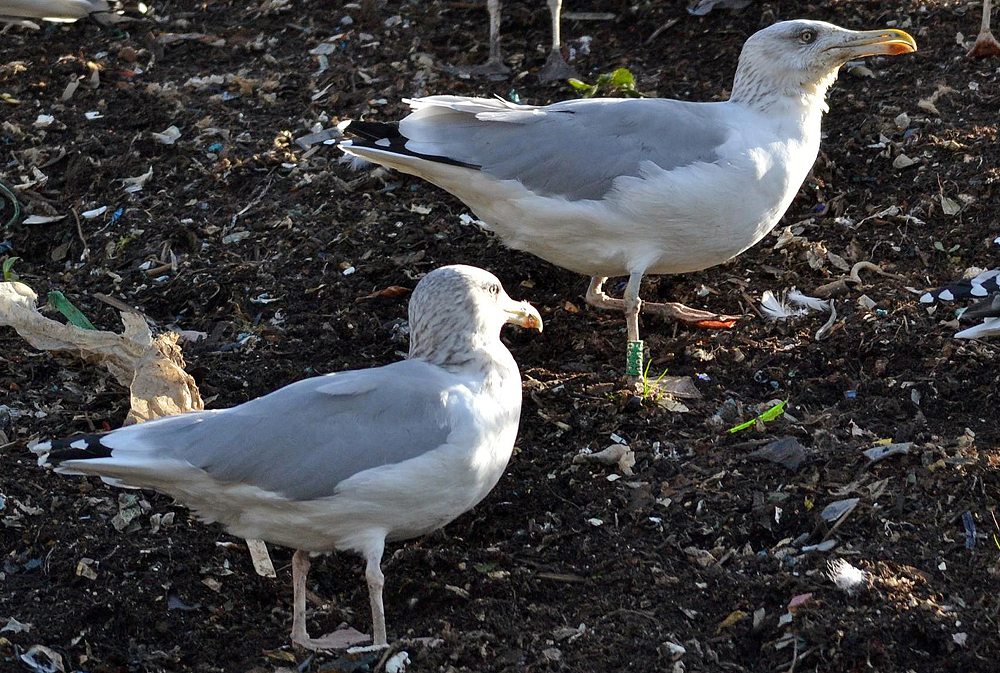
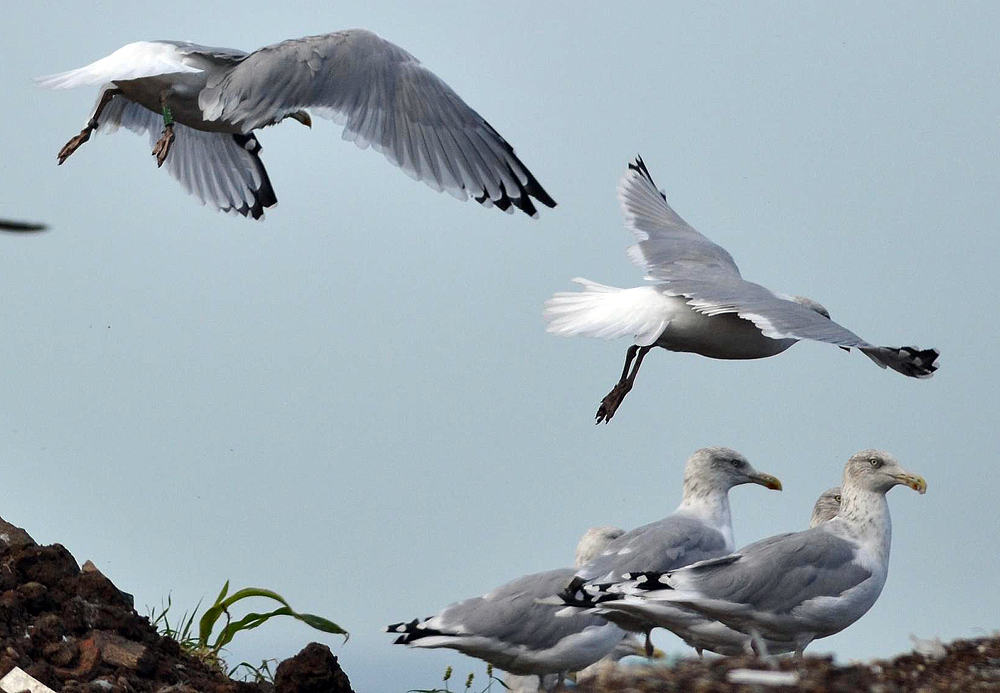
below: cachinnans hybrid 8CY male 4P46 October 28 2011, Pohlsche Heide - Detmold, Germany. Picture: Armin Deutsch.
This interesting plate shows 4P46 as an adult (7CY), nearly in full winter plumage (primaries still regrowing).The head-streaking, especially the shadowing around the eye, is too heavy for any normal Caspian Gull, and perhaps would be the first clue to it being a probable hybrid. Note than in this photograph the bill is slightly open and so looks deceptively deep.
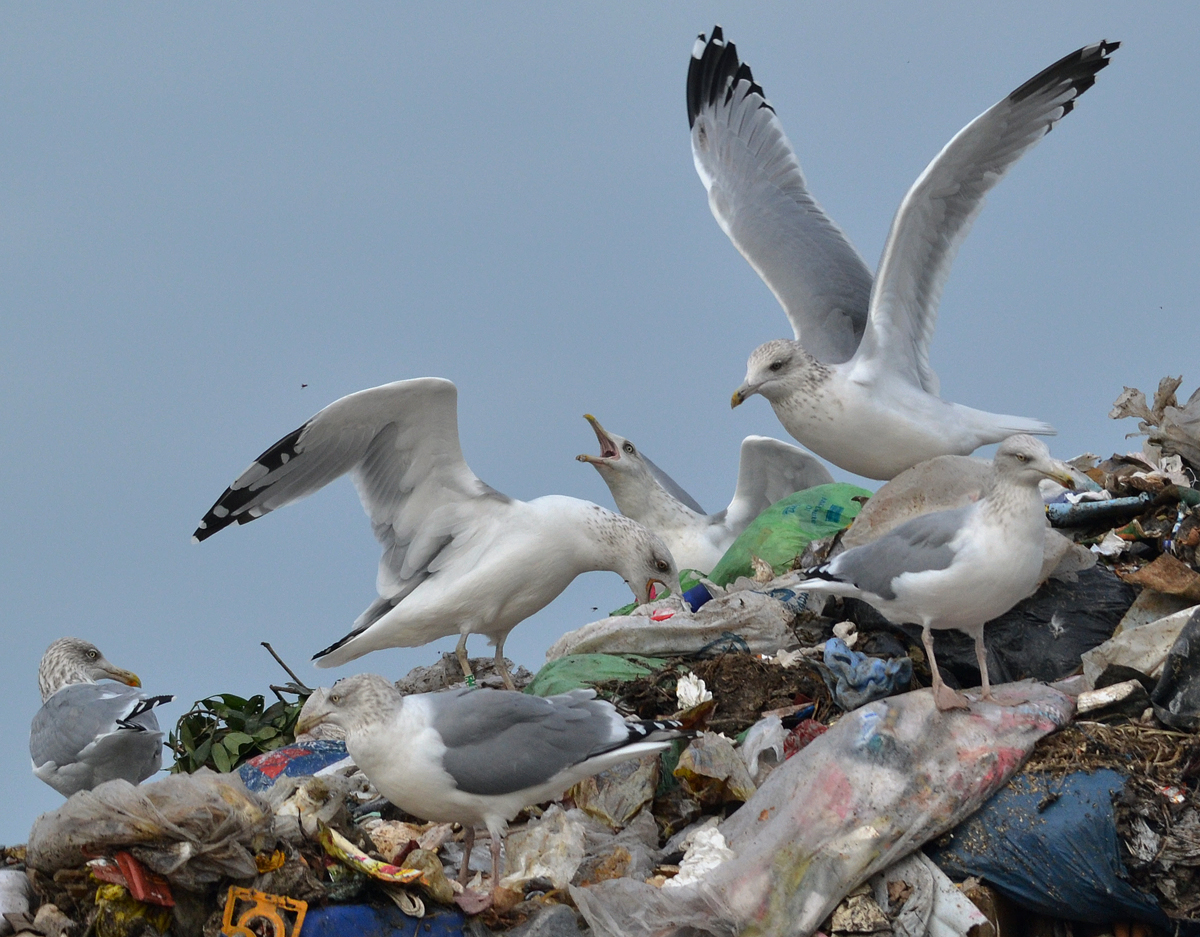
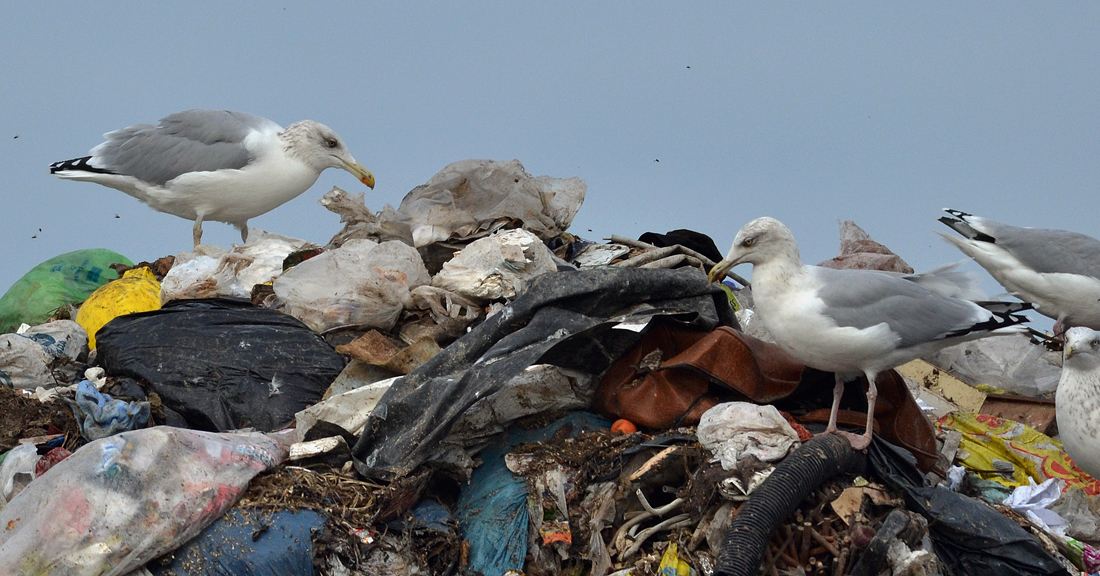
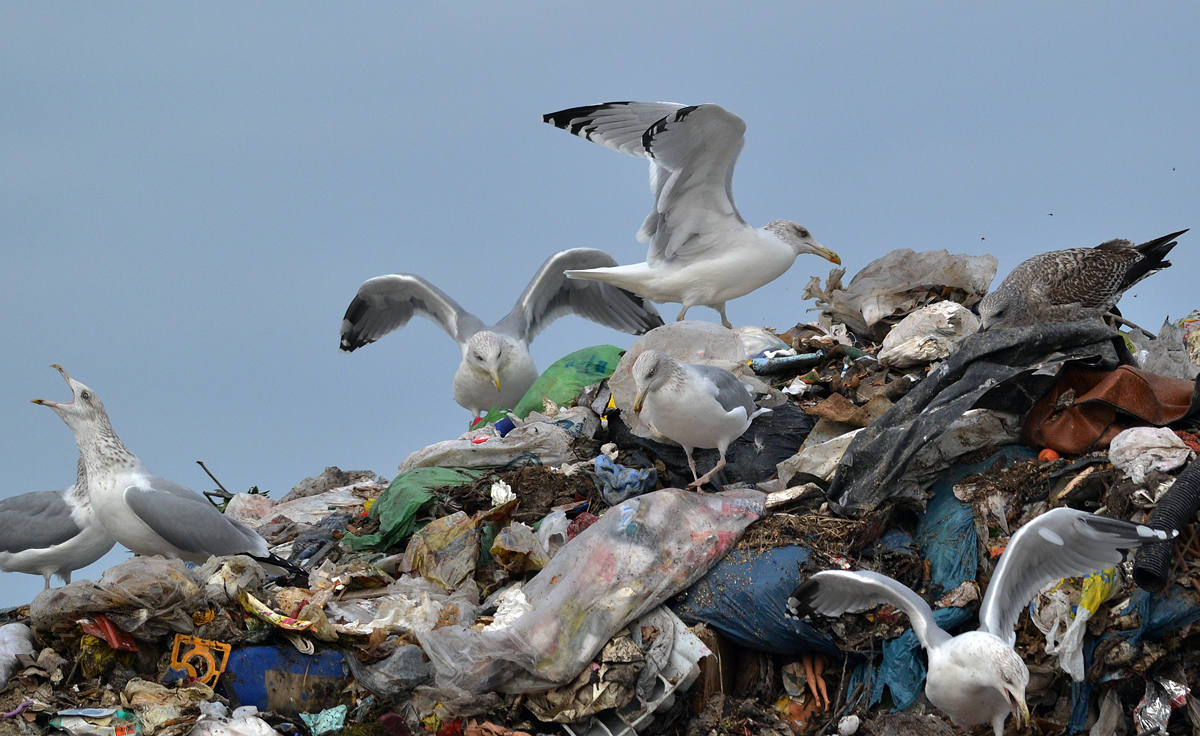
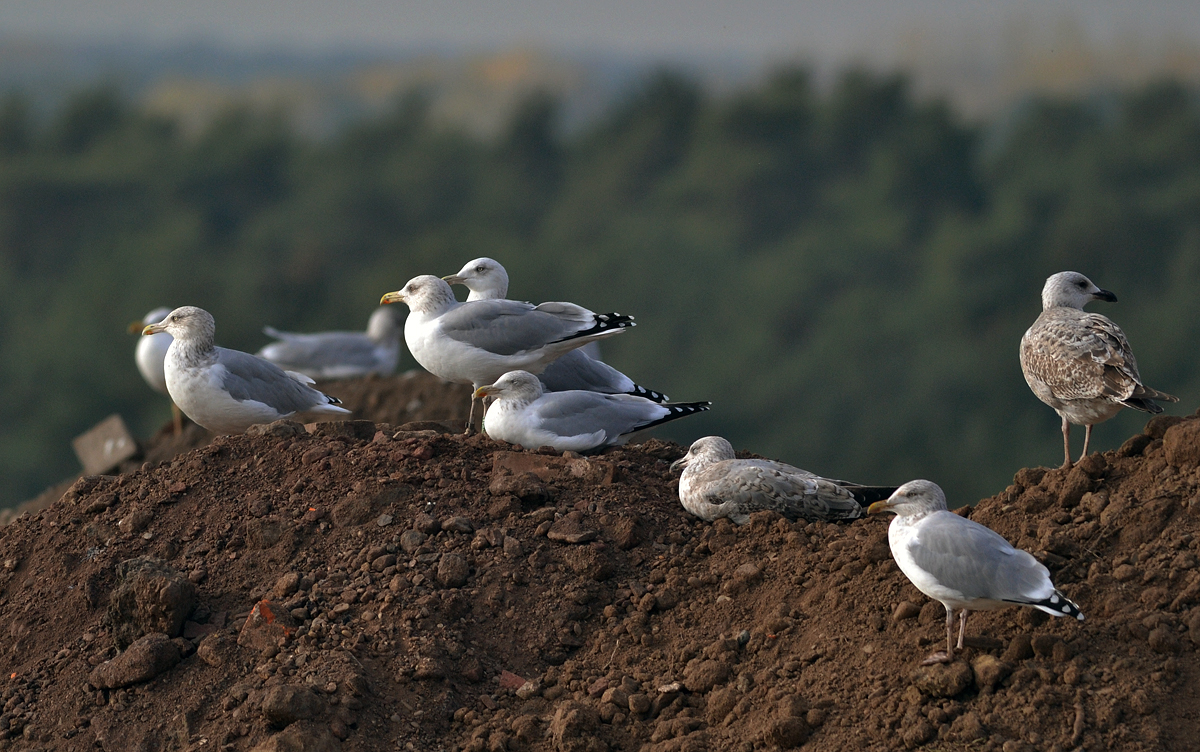
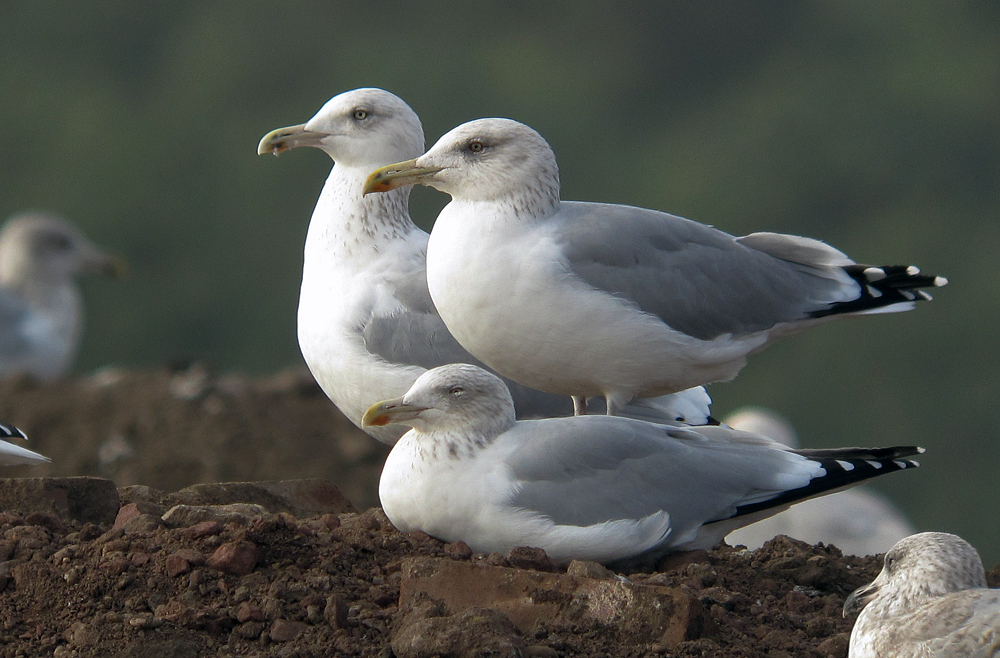
Below, table 1 is repeated to score this bird in adult plumage. Traits scores are in italic + bold.
Total score is 8 (by Mars Muusse), but open for discussion. P10 pattern scored on 4th generation feather (5CY May bird), which has a pattern that still may change as the bird should be classified sub-adult; see also dark patches on greater primary coverts on May 21 2008. Unfortunately, outer primaries not fully grown by October 2011 so no possibility to score from this observaton. P10 tip now scored "2", but this may decline to "1" (or maybe even "0"?).
| Trait | Score | Description |
| P10 overall pattern: white to black ratio | 0 | less black than white |
| 1 | approximately equal black and white | |
| 2 | more black than white | |
| P10: white tip | 0 | clear white, no signs of black |
| 1 | small dark spots on one or both webs | |
| 2 | incomplete subterminal bar (two large black spots, one on each web or an unconnected bar, broken in the middle) | |
| 3 | complete subterminal bar | |
| P10: tongue | 0 | white or whitish |
| 1 | paler than mantle | |
| 2 | same shade as mantle | |
| P5: extent of black | 0 | black on both webs connected, forming band, black of equal depth on each web |
| 1 | black on both webs connected, forming band, black on outer web deeper than inner | |
| 2 | black on both webs, but isolated spots (= incomplete bar) | |
| 3 | black on outer web only | |
| 4 | no black | |
| P4: extent of black | 0 | black on both webs |
| 1 | black on one web only | |
| 2 | no black | |
| Iris peppering | 0 | dark-looking, >50% covered by dark spotting/peppering |
| 1 | moderately dark, with 10-50% of the area spotted | |
| 2 | single or very few dark spots (area < 10%) | |
| 3 | no dark spotting on iris | |
| Eye-ring colour | 0 | dark/deep orange to red |
| 1 | pale to moderately orange | |
| 2 | yellow | |
| Bill shape | 0 | very long and slim, with little/no visible gonydeal angle (L:D ratio >2.8) |
| 1 | slim, slight gonydeal angle (ratio 2.4-2.79) measured 2,40 Mars Muusse from picture | |
| 2 | intermediate (ratio 2.0-2.39) | |
| 3 | short and deep, well-marked gonydeal angle (ratio <2.0) | |
| Leg length | 0 | long |
| 1 | moderately long | |
| 2 | short |
Fig. 6. Sum trait scores for adult Caspian Larus cachinnans and Herring Gulls L argentatus, and hybrids. Scores are calculated by summing individual trait score values. The figure shows the percentage of individuals in the sample with a given sum value. Numbers in parentheses are the minimum and maximum values recorded.
From the Rarities Committee's files - Identification of
Caspian Gull.
Part 2: phenotypic variability and the field characteristics of hybrids, by Chris Gibbins, Grzegorz Neubauer and Brian Small, IN: BB 104/2011.
